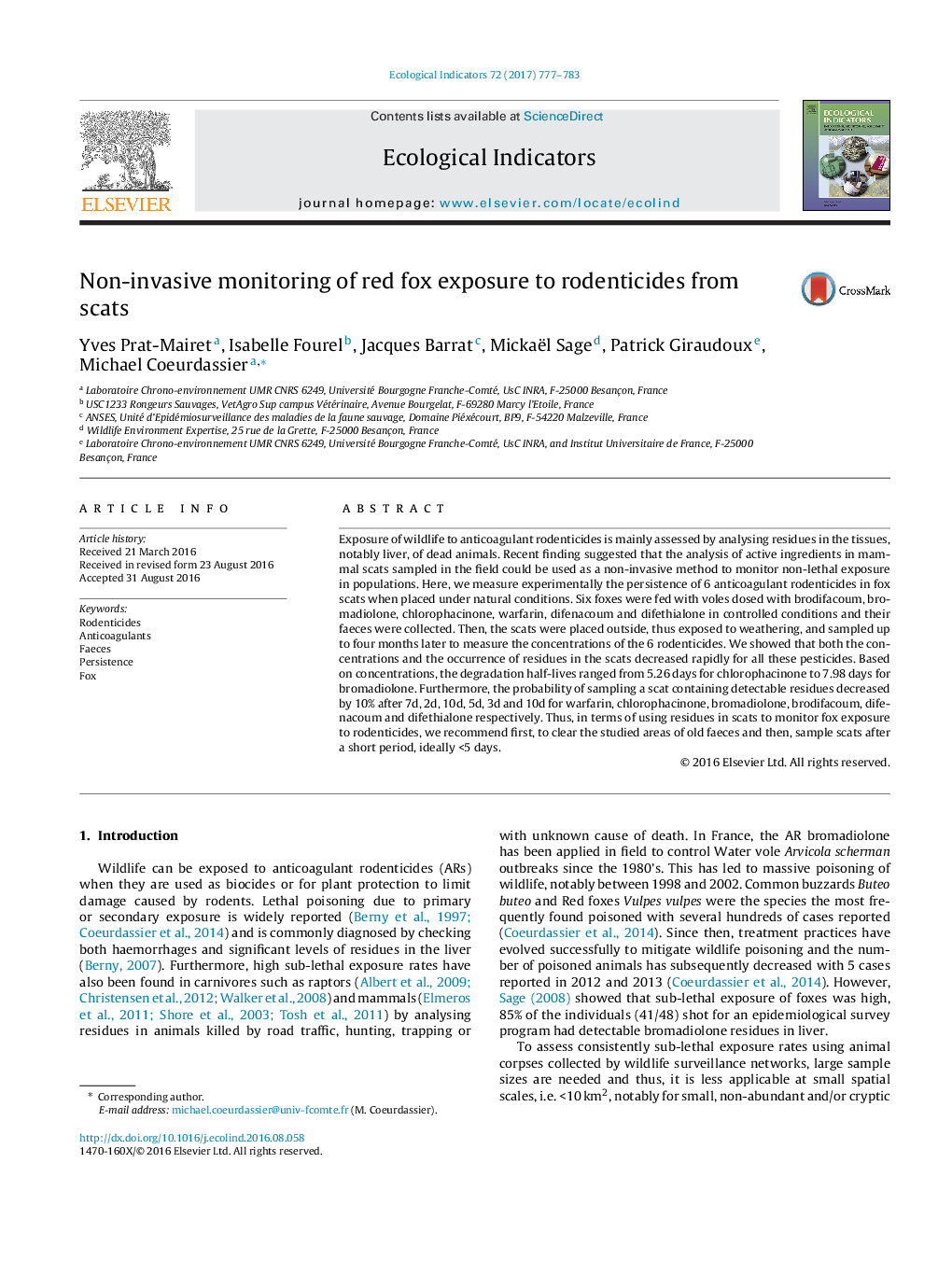| Article ID | Journal | Published Year | Pages | File Type |
|---|---|---|---|---|
| 6292868 | Ecological Indicators | 2017 | 7 Pages |
Abstract
Exposure of wildlife to anticoagulant rodenticides is mainly assessed by analysing residues in the tissues, notably liver, of dead animals. Recent finding suggested that the analysis of active ingredients in mammal scats sampled in the field could be used as a non-invasive method to monitor non-lethal exposure in populations. Here, we measure experimentally the persistence of 6 anticoagulant rodenticides in fox scats when placed under natural conditions. Six foxes were fed with voles dosed with brodifacoum, bromadiolone, chlorophacinone, warfarin, difenacoum and difethialone in controlled conditions and their faeces were collected. Then, the scats were placed outside, thus exposed to weathering, and sampled up to four months later to measure the concentrations of the 6 rodenticides. We showed that both the concentrations and the occurrence of residues in the scats decreased rapidly for all these pesticides. Based on concentrations, the degradation half-lives ranged from 5.26 days for chlorophacinone to 7.98 days for bromadiolone. Furthermore, the probability of sampling a scat containing detectable residues decreased by 10% after 7d, 2d, 10d, 5d, 3d and 10d for warfarin, chlorophacinone, bromadiolone, brodifacoum, difenacoum and difethialone respectively. Thus, in terms of using residues in scats to monitor fox exposure to rodenticides, we recommend first, to clear the studied areas of old faeces and then, sample scats after a short period, ideally <5 days.
Related Topics
Life Sciences
Agricultural and Biological Sciences
Ecology, Evolution, Behavior and Systematics
Authors
Yves Prat-Mairet, Isabelle Fourel, Jacques Barrat, Mickaël Sage, Patrick Giraudoux, Michael Coeurdassier,
